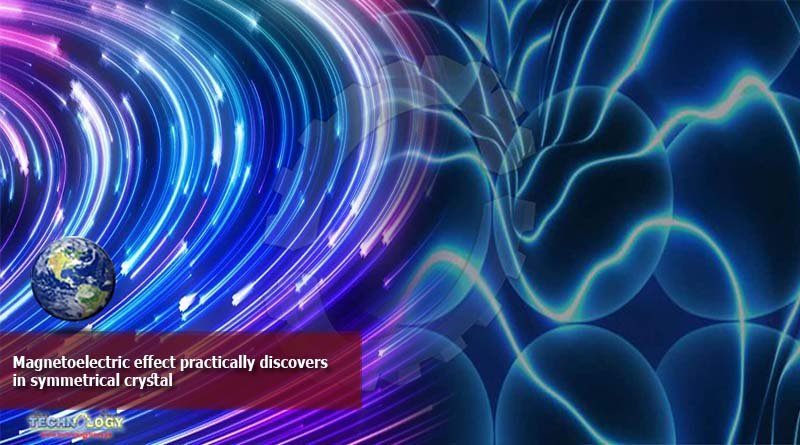Magnetism and electrical power are connected together in lots of strange methods consisting of the magnetoelectric effect visible in some crystals– where the electrical residential or commercial properties of a crystal can be affected by a electromagnetic field, and vice versa.

Now things have actually gotten back at weirder, since researchers have actually discovered a brand name new magnetoelectric effect in a symmetrical crystal– and it should not be possible.
The effect was discovered in a particular kind of crystal called a langasite, which is comprised of lanthanum, gallium, silicon and oxygen, plus holmium atoms.
Importantly, this specific crystal has a symmetrical structure, which is believed to eliminate the possibility of a link in between magnetism and electrical power.
“Whether the electrical and magnetic properties of a crystal are coupled or not depends on the crystal’s internal symmetry,” says physicist Andrei Pimenov, from the Vienna University of Technology (TU Wien) in Austria.
“If the crystal has a high degree of symmetry, for example, if one side of the crystal is exactly the mirror image of the other side, then for theoretical reasons there can be no magnetoelectric effect.”
In this case it was various: not just was the symmetrical crystal able to produce a magnetoelectric effect, it was a kind of effect not seen prior to.
The researchers state that while the proportion was maintained in a geometrical sense, the magnetism of the holmium atoms broke the proportion, making it possible for an effect that drifted into the world of quantum physics.
This break indicated polarisation was possible, where the favorable and unfavorable charges in the crystal ended up being a little displaced.
This is quickly done by means of an electrical field, however with langasite it might be finished with a electromagnetic field too, and the secret ended up being the strength of the electromagnetic field.
“The crystal structure is so symmetrical that it should actually not allow any magnetoelectric effect,” says Pimenov “And in the case of weak magnetic fields there is indeed no coupling whatsoever with the electrical properties of the crystal.”
“But if we increase the strength of the magnetic field, something remarkable happens: the holmium atoms change their quantum state and gain a magnetic moment. This breaks the internal symmetry of the crystal.”
While langasite revealed a direct relationship in between polarisation and magnetic field strength, which is typical, the relationship in between polarisation and the instructions of the electromagnetic field wasn’t typical at all– it was highly non-linear.
That’s the brand name new element, that simply a little modification in the rotation of the electromagnetic field might produce a huge modification in the electrical polarisation effect.
The next action for the scientists is to see whether this recently discovered effect works in the opposite instructions too, altering the magnetic residential or commercial properties with an electrical field.
This may look like a great deal of high-end physics– and it is– however there are real-world applications in regards to conserving and saving computer system information. The magnetoelectric effect is likewise essential for different kinds of sensing unit innovations.
“In magnetic memories such as computer hard disks, magnetic fields are needed today,” says Pimenov
“They are generated with magnetic coils, which requires a relatively large amount of energy and time. If there were a direct way to switch the magnetic properties of a solid-state memory with an electric field, this would be a breakthrough.”
Originally published by Reporter
